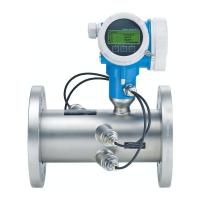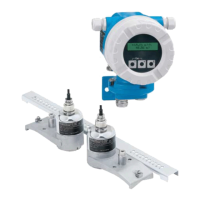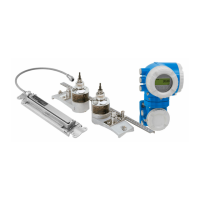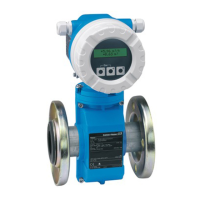Proline Prosonic Flow B 200 HART Technical data
Endress+Hauser 131
Nominal diameter Velocity Effective volume flow
[mm] [in] [m/s] [ft/s] [m
3
/h] [ft
3
/h]
150 6 1 to 30 3.28 to 98.4 76 to 2 290 2 695 to 80 862
200 8 1 to 30 3.28 to 98.4 131 to 3 925 4 620 to 138 596
Optional (order code for "Calibration flow", option 2 "Operable flow range 100 : 1")
Nominal diameter Velocity Effective volume flow
[mm] [in] [m/s] [ft/s] [m
3
/h] [ft
3
/h]
50 2 0.3 to 30 0.98 to 98.4 3 to 269 95 to 9 495
80 3 0.3 to 30 0.98 to 98.4 6 to 611 215 to 21 592
100 4 0.3 to 30 0.98 to 98.4 11 to 1 032 363 to 36 443
150 6 0.3 to 30 0.98 to 98.4 25 to 2 290 805 to 80 862
200 8 0.3 to 30 0.98 to 98.4 43 to 3 925 1 365 to 138 596
The values in the table should be regarded as reference values.
Recommended measuring range
"Flow limit" section → 139
Operable flow range • 30 : 1 (standard; order code for "Calibration Flow", option 1 "Operable flow range 30 : 1")
• 100 : 1 (optional; order code for "Calibration Flow", option 2 "Operable flow range 100 :
1")
Flow rates above the preset full scale value do not overload the amplifier so the totalized
values are registered correctly.
Input signal Current input
Current input 4-20 mA (passive)
Resolution 1 µA
Voltage drop Typically: 2.2 to 3 V for 3.6 to 22 mA
Maximum voltage ≤35 V
Possible input variables Pressure
External measured values
To increase the accuracy of certain measured variables, the automation system can
continuously write the operating pressure to the measuring device. Endress+Hauser
recommends the use of a pressure measuring device for absolute pressure, e.g. Cerabar M
or Cerabar S
Various pressure transmitters can be ordered from Endress+Hauser: see "Accessories"
section → 129
It is recommended to read in external measured values to calculate the following measured
variables:
• Energy flow
• Mass flow
• Corrected volume flow
• Corrected methane volume flow

